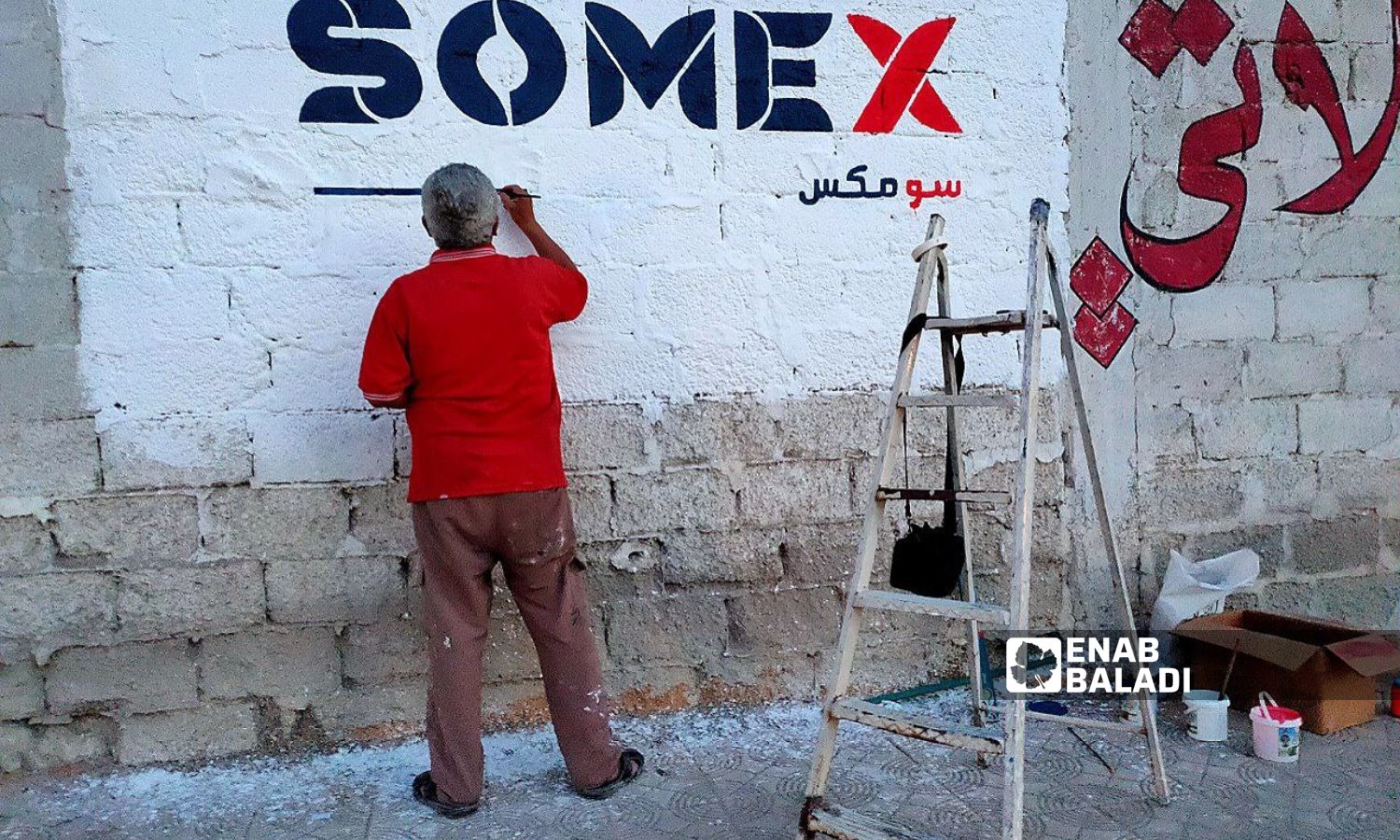



Al-Hasakah – Majd al-Salem
On the sides of main roads and at famous street intersections within the city of Qamishli and other cities in al-Hasakah, one can nowadays notice individuals carrying a pot of whitewash beginning to paint the walls facing these streets, turning them into a blank page on which they inscribe, after preparation, the name of a business, a doctor, or a store selling a particular product.
Despite the advancement of advertising methods and their impact on the calligraphy profession in the province, calligraphers’ activity is still present, driven by passion and love.
Calligrapher Rashed al-Hussein (50 years old) told Enab Baladi that the calligraphers have a peak season, which begins with the start of summer when demand for their work increases as more people go out for walks or strolls on the main streets, making them a target for wall advertisements.
Al-Hussein has been working in the field of calligraphy in al-Hasakah for many years. He mentioned that in recent years, the profession faced several challenges, especially with the spread of modern advertising methods such as digital screens and electronic boards.
He noted that these modern tools have led to a decrease in demand for traditional calligraphy work, and companies and individuals now prefer to use modern advertising means because they offer the ability to easily modify and update content regularly, making them less interested in traditional handcrafted work.
Additionally, he mentioned that the cost of raw materials needed for calligraphic work has significantly increased, affecting the prices of the works and making them less competitive compared to other advertising methods.
Nevertheless, al-Hussein believes there is a unique beauty in traditional calligraphy work, and he tries to preserve this craft through participation in art exhibitions and events, offering distinctive works that blend tradition with modernity.
Regarding the wages for calligraphy, al-Hussein considers them low “despite the creativity involved”. The fee for designing an advertisement board of dimensions (3 meters by 1.5 meters) is 300,000 Syrian pounds (the US dollar is about 14,700 pounds), if the content is only writing.
The price increases to 400,000 Syrian pounds if the board includes specific drawings, noting that the calligrapher buys the raw materials at his own expense.
The calligrapher also stated that he does not rely solely on advertising board design fees as his income source, as they are not consistent throughout the year. Instead, he conducts courses teaching the arts of Arabic calligraphy and brush painting, noting that there is good demand for this type of course.
In addition to writing advertisements on walls, another group of calligraphers depends on activities organized by international and local organizations operating in the region, which intermittently carry out wall advertising campaigns and what they call “mobilization and advocacy” campaigns for a specific social issue, such as combating racial discrimination, raising awareness about certain diseases, or celebrating an occasion of interest to the residents and components of the region.
These activities are conducted in cooperation with calligraphers and painters who are paid in US dollars.
The profession of manually designing advertisement boards differs from that which now relies on modern technologies.
Wasim al-Rawi (35 years old) from Qamishli works in advertising, and told Enab Baladi that the calligrapher needs a whole day to prepare the wall for a board; he works manually to whitewash and then paint the wall, a physically exhausting task.
In contrast, al-Rawi mentioned that through design software and printing machines, this work can be done “with a push of a button” from behind a desk.
Regarding wages, al-Rawi said they are based on the size of the advertisement board, with each square meter costing the client five US dollars.
He added that this price is close to the fee of a calligrapher (after the costs of tools and paint), but the difference lies in the effort that the calligrapher puts in, which, according to him, is priceless.
There is also the speed of completing boards, amidst endless options in terms of colors, styles of calligraphy scripts, and drawings, according to al-Rawi.
According to what Enab Baladi learned from several calligraphers and advertising shops, there are security obstacles to their work, as several approvals must be obtained in order to write a specific advertisement or promotion, especially in areas located in the centers of cities.
The number of calligraphers in al-Hasakah is unknown, but according to the last exhibition of calligraphy held by the Arab Writers Union and the cultural association “Sofsaf al-Khaboor” in al-Hasakah, affiliated with the Syrian regime’s government, in February 2024, which has become an annual event, the number of participating calligraphers was 40, representing various old and modern schools known for the art of Arabic calligraphy and its formulations.
if you think the article contain wrong information or you have additional details Send Correction